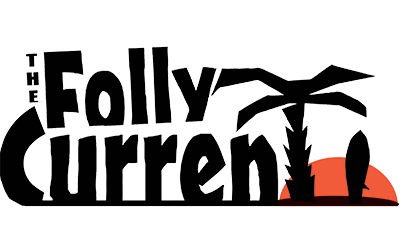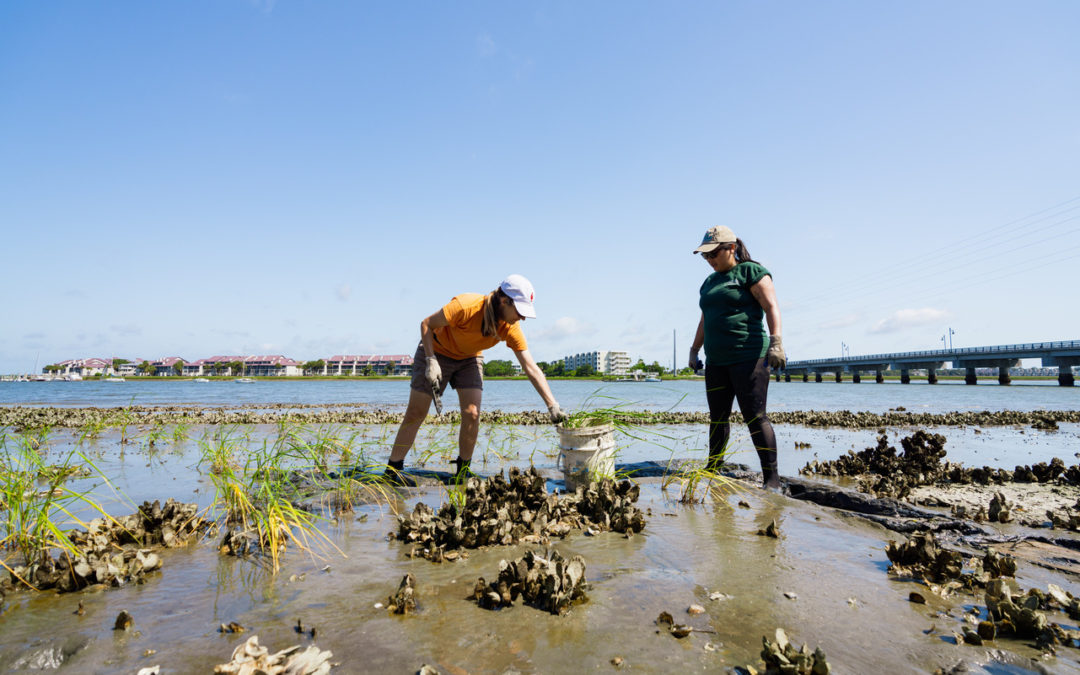by Jenny Peterson | Staff Writer
In late June, dozens of volunteers are set to spruce up Folly Beach’s “front lawn”—the marsh grass that grows at the Folly River Landing and Turn of River on the side of the bridge that ushers drivers onto the island.
Volunteers will be ankle-deep in pluff mud, walking on temporary boards for stability, bending down to fully bury the roots of tiny Spartina cordgrass grass into the shore.
The Lowcountry’s iconic colonies of cordgrass are a critical part of the barrier island ecosystem; they provide a habitat for sea critters, help stabilize the shore and help protect the area from erosion and storm surge.
The marsh grass grows naturally in the Lowcountry, yet some areas have been identified as in need of restoration help.
Two Folly Beach sites were among five areas in Charleston County identified as needing a boost; diminished grass along the shore may be caused by erosion or natural die-off.
Through The Community Science Salt Marsh Restoration and Monitoring Project, around 16,000 Spartina plants are transplanted back into the marsh each year in hopes that they take root and spread. The program is paid for by a three-year grant through the National Oceanic and Atmospheric Administration (NOAA) National Marine Fisheries Service (NMFS).
This year’s replanting at Folly Landing and Turn of River will be from June 21-23. Anyone in the community can sign up to help replant the grasses.
Volunteers commit to several hours during each day to the task, under the watchful eye of experts at the S.C. Department of Natural Resources (DNR), the lead agency for the program.
Before getting their hands dirty, volunteers take a one-hour orientation class to become trained as community scientists. They’ll use a smartphone data collection app to record salt marsh restoration information, including the number of plants transplanted.
“The purpose of the grant is to restore these areas, but the other also equally important angle for this is trying to bring awareness about this habitat to communities by engaging them in this restoration project,” said Elizabeth Vernon (E.V.) Bell, the marine education specialist with the S.C. Sea Grant Consortium, an agency partner in the program.
Volunteers will also create oyster reefs at the sites to maximize the replanting efforts.
“Ideally, it’s the perfect setup where you create an oyster reef and plant marsh grass behind it; all of it helps stabilize the marsh,” Bell said.
The grasses that will be transplanted were harvested as seeds from the marsh last winter by volunteers and carefully grown in controlled conditions over the past five months.
The seeds were first placed inside a refrigerator at the Department of Natural Resources to mimic cool outside temperatures and recreate the natural dormancy phase of the grass.
“We just let them chill out, quite literally, in the fridge,” Bell said.
Seedlings were then transferred in early spring to greenhouses at both the Department of Natural Resources (DNR) site in James Island and at the College of Charleston. Other grant partners in the program include the South Carolina Aquarium and Clemson University Cooperative Extension.
Once the grasses are formed enough to transplant back in nature, volunteers bring them back to their natural home. Grasses are planted one foot apart, marked that morning of the transplanting with orange and yellow flags.
In only the second year of the program, Bell said the efforts of transplating the grass can already be seen in the marsh.
“It’s obvious to see where we plant where there was (previously) just a patch of pluff mud and you can see these plants have taken root, are starting to spread, and are really establishing themselves,” Bell said. “They’ll propagate and you’ll get new shoots coming up in the marsh.”
Volunteers make the program possible and spread knowledge about these vital plants.
“Using volunteers to help collect seeds (in the winter) and then transplant them, they’re seeing the whole process,” Bell said. “They’re also understanding why this plant is so critical to the salt marsh and our coastal community.”
To sign up to be a volunteer, email Elizabeth Bell at elizabeth.bell@scseagrant.org.


